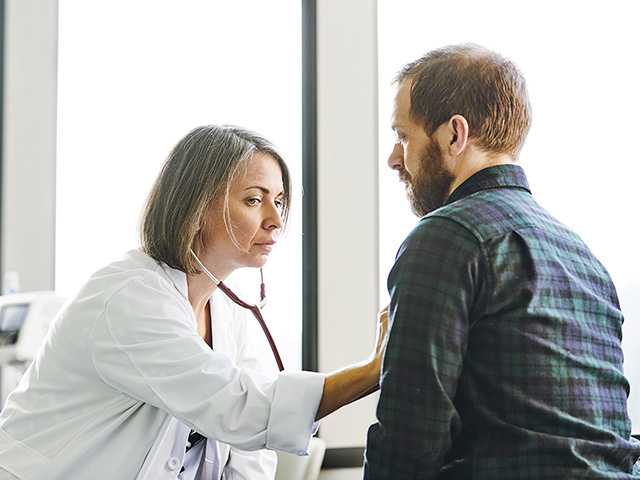As the baby boomer generation continues to age, their needs and preferences are shaping various industries, with healthcare being one of the most significantly impacted. Among the most notable shifts in healthcare is the growing demand for medical alert systems. These systems, which provide individuals with a means of immediate communication in case of an emergency, are becoming increasingly popular among baby boomers. The reasons for this trend are numerous, ranging from the desire for independence to the need for safety, and it’s clear that medical alert systems are becoming a vital part of many seniors’ lives.
Understanding Medical Alert Systems
Medical alert systems, also known as personal emergency response systems (PERS), are devices designed to summon help in case of an emergency. They typically consist of a wearable pendant or bracelet with a button that can be pressed to alert a monitoring center when the wearer needs assistance. Some systems also offer fall detection, GPS tracking, and even direct communication with emergency services. These systems provide peace of mind to both users and their families, knowing that help is just a button press away.
Why Baby Boomers Are Embracing Medical Alert Systems
- Aging Population
The most obvious reason for the growing demand is the aging population of baby boomers. Born between 1946 and 1964, baby boomers are reaching the age where they are more susceptible to health issues such as heart attacks, strokes, and falls. As a result, they are becoming more proactive in seeking solutions that will allow them to live independently while ensuring that help is available in case of an emergency. Medical alert systems provide the perfect balance of independence and security, allowing them to stay in their homes longer, a preference many seniors have. - The Desire for Independence
One of the hallmarks of the baby boomer generation is their desire to remain independent for as long as possible. Many baby boomers want to avoid moving into nursing homes or assisted living facilities, as they view these as a loss of autonomy. Medical alert systems empower them to stay in their homes, where they are comfortable and familiar with their surroundings, all while knowing that help is just a call away. This ability to maintain their independence is a significant factor driving the demand for these devices. - Increased Focus on Health and Wellness
As people age, they naturally become more concerned with maintaining their health and well-being. Baby boomers, who have witnessed rapid advances in healthcare and technology over the years, are particularly keen on utilizing new tools to stay healthy. Many are turning to wearable devices that track vital signs, monitor fitness levels, and detect falls. Medical alert systems fit seamlessly into this growing trend by providing an additional layer of safety and health monitoring. This integration of technology with health management is appealing to boomers who are tech-savvy and open to adopting new solutions. - Rising Healthcare Costs
The cost of healthcare continues to rise, and baby boomers, particularly those on fixed incomes or retired, are looking for ways to manage these costs without compromising on their health. Medical alert systems can be an affordable alternative to full-time in-home care or frequent hospital visits. Many systems offer various pricing plans, some with minimal monthly fees, making them a viable option for seniors who want to reduce healthcare-related expenses while ensuring they have access to help when needed. - Family Peace of Mind
Baby boomers’ children, many of whom are now middle-aged adults, are increasingly concerned about their parents’ safety and well-being. As the baby boomer generation ages, their children often find themselves balancing their own busy lives with the responsibility of ensuring that their parents are well taken care of. The use of medical alert systems alleviates some of these concerns, providing both the wearer and their family with peace of mind. In the event of an emergency, family members are typically notified immediately, and emergency services can be dispatched swiftly. This safety net allows family members to feel secure knowing that their loved ones are protected, even when they are not physically present.

Types of Medical Alert Systems
There are several types of medical alert systems available, each designed to meet the unique needs of baby boomers. The most common types include:
- Traditional Landline Systems
These systems require a landline phone connection to operate. They are reliable and typically less expensive than their mobile counterparts. However, they are not suitable for individuals who do not have a landline or who may frequently leave the house. - Cellular Systems
Cellular-based medical alert systems are more versatile, as they use a cellular connection instead of a landline. This makes them ideal for individuals who no longer have a landline phone or for those who spend time away from home. These systems often come with features like fall detection, GPS tracking, and two-way communication, providing added convenience and peace of mind. - GPS Systems
For active seniors who are always on the go, GPS-enabled medical alert systems are an excellent option. These devices can track the user’s location in real-time, ensuring that help can be dispatched quickly if necessary. They are especially helpful for seniors who may wander due to dementia or Alzheimer’s disease, as caregivers can track their whereabouts at all times. - Smartwatch Medical Alert Systems
In addition to traditional devices, some companies are now offering smartwatch-style medical alert systems. These devices can track health metrics like heart rate, steps, and sleep patterns, while also providing a way to summon help in an emergency. They appeal to tech-savvy baby boomers who are accustomed to using smartphones and other wearable devices.
The Future of Medical Alert Systems
The demand for medical alert systems is expected to continue growing as the baby boomer population ages. With technological advancements, these systems are becoming more sophisticated, offering additional features such as medication reminders, remote monitoring, and even telehealth consultations. As artificial intelligence (AI) and machine learning evolve, it’s likely that these systems will become even more personalized, able to detect subtle changes in a person’s health and predict potential emergencies before they happen.
Moreover, as telemedicine and virtual healthcare become more mainstream, medical alert systems may integrate with these services, allowing users to communicate directly with healthcare professionals when necessary. To learn more about how these integrations work, visit site. This seamless integration of healthcare services into medical alert systems will further enhance their value, offering comprehensive solutions for aging individuals.
Conclusion
The growing demand for medical alert systems among baby boomers is a testament to the changing landscape of healthcare for aging individuals. These systems offer a practical, affordable, and effective way for seniors to live independently while ensuring that help is available in emergencies. With a focus on safety, health, and peace of mind, medical alert systems have become an essential tool for baby boomers, their families, and healthcare providers alike. As technology continues to advance, the future of medical alert systems promises even more innovative solutions, further improving the quality of life for aging individuals and giving them the confidence to embrace their later years with independence and security.




